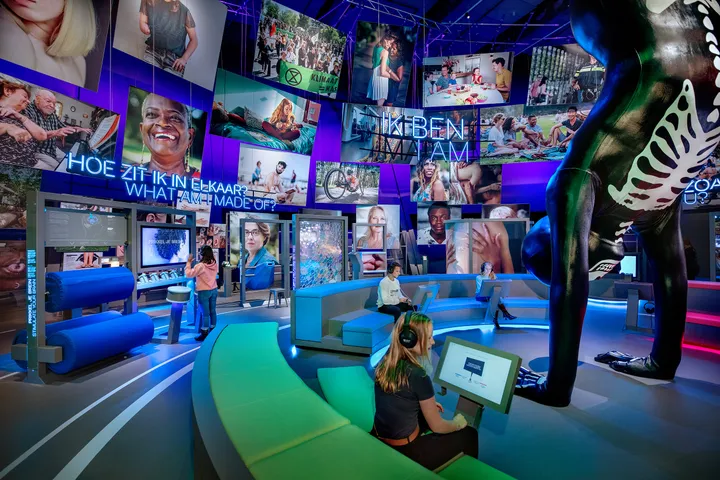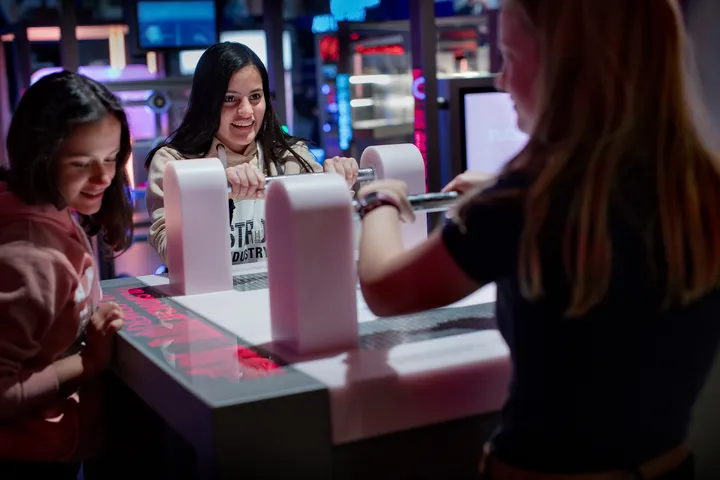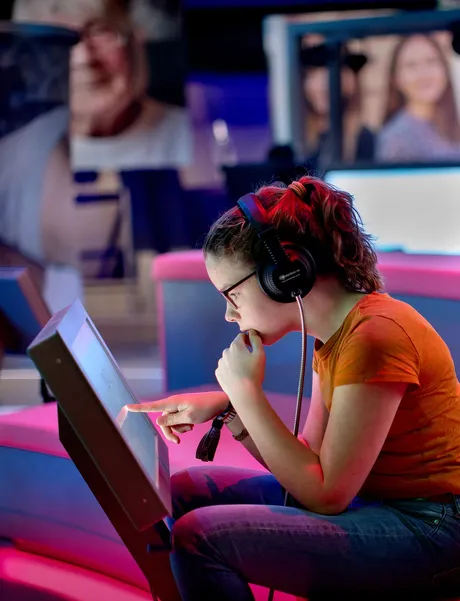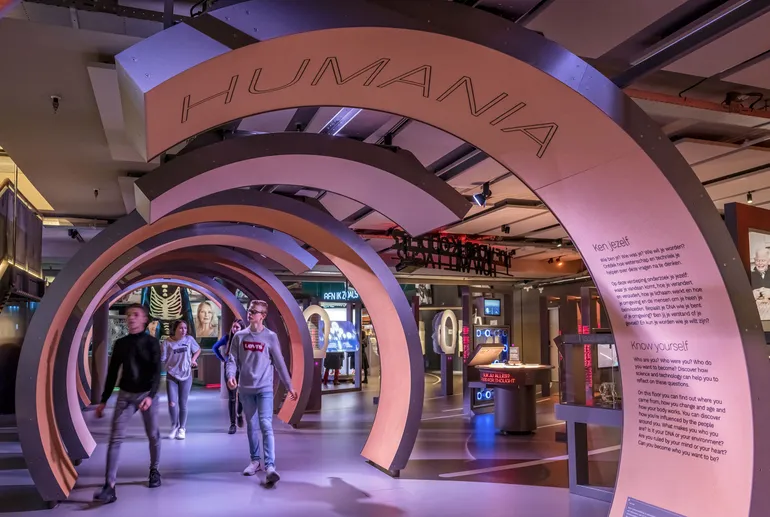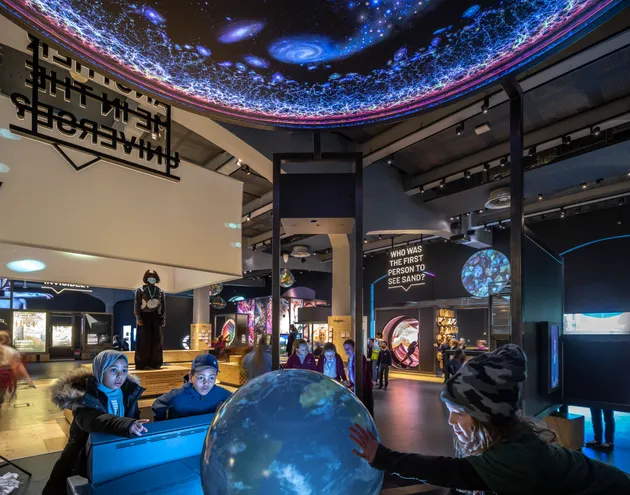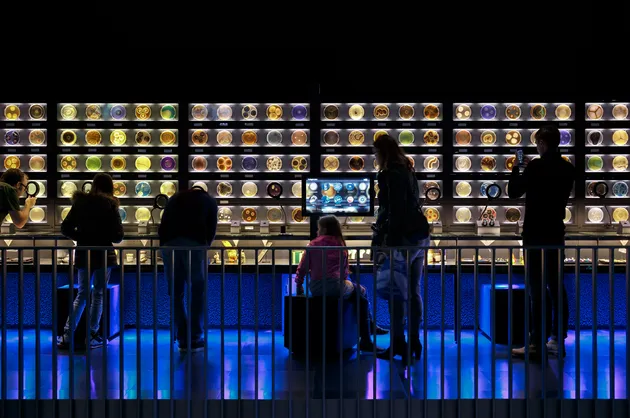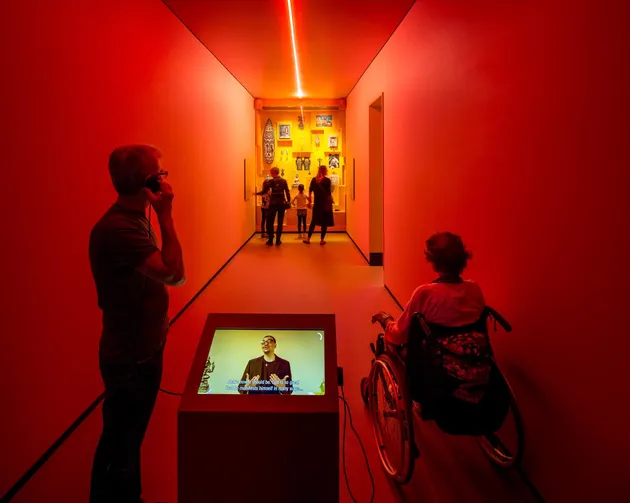LEARN ABOUT THE HUMAN BODY
Humania
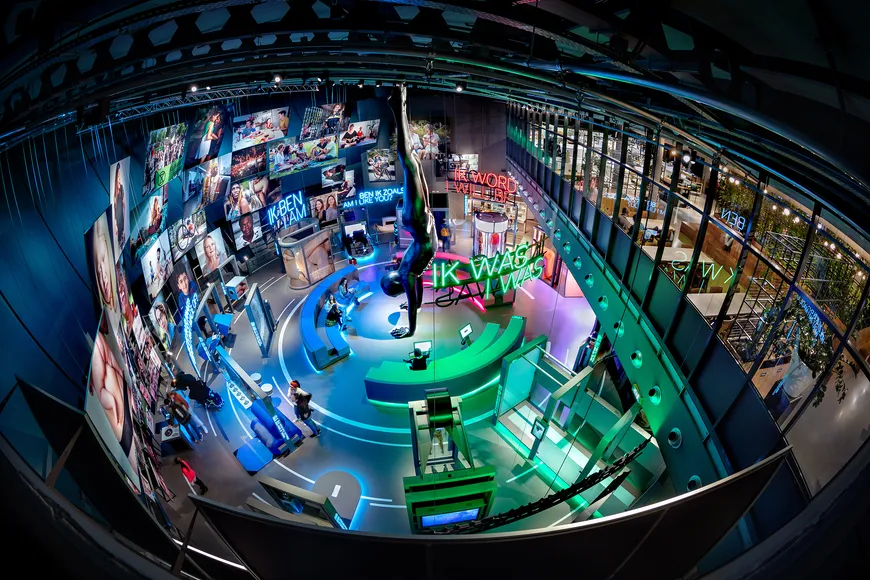
Humania tells the story of humankind. Visitors enter the exhibition through a tunnel that leads to the exhibition’s central amphitheatre where Florentijn Hofman’s giant skeleton does a handstand. Upside down and inside out, this skeleton prepares visitors to explore humanity from new perspectives. Graphic lines on the floor around the amphitheatre mimic a magnetic field, connecting forty exhibits in a dynamic arrangement. Here, visitors explore what it means to be human through games, stories and objects, but most of all, by discovering themselves.
- Location
- Amsterdam (NL)
- Client
- NEMO Science Museum
- Year
- 2019
- Service
- Concept, spatial design, graphic design, art direction
See and be seen
The exhibition’s minimal steel and glass structures let visitors become part of the scenography. Voices and laughter activate the space as visitors activate hands-on exhibits. These exhibits facilitate observation, as visitors can mimic others’ gestures through one-way glass or play a responsivity game together. By emphasising the relationships between visitors, we encourage them to compare themselves. Visitors discover the similarities that unite us and the differences that make every person unique.
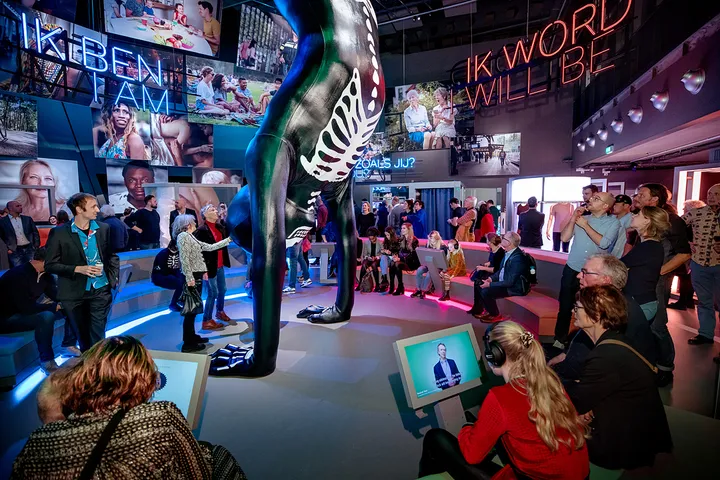
Three-part collage
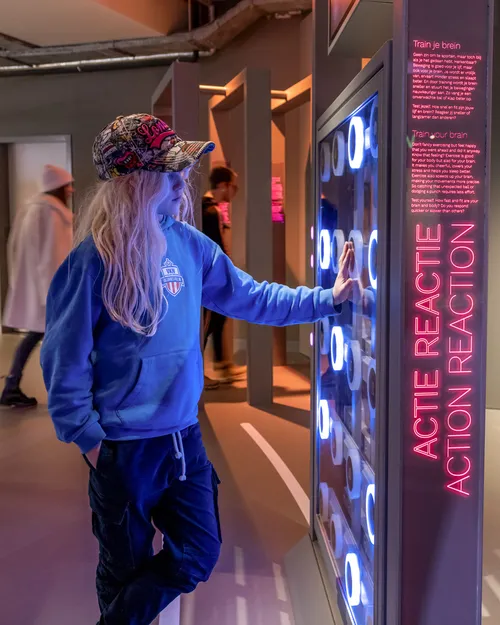
Participating in science
Scientists are the true stars of Humania. They talk directly to visitors about their research on life-sized screens. To determine what scientific research to include, we worked with Humania’s target audience: teenagers. They told us what topics resonate with them and what information they already learn in school. But visitors don’t just learn about science in Humania: they actively participate in scientific research, too. Several experiments ask for your permission to gather and anonymise your response so that scientists can use it as research data. The decisions you make while competing against a fellow visitor in a prisoner’s dilemma game contribute to a developmental psychologist’s research on risk-taking.
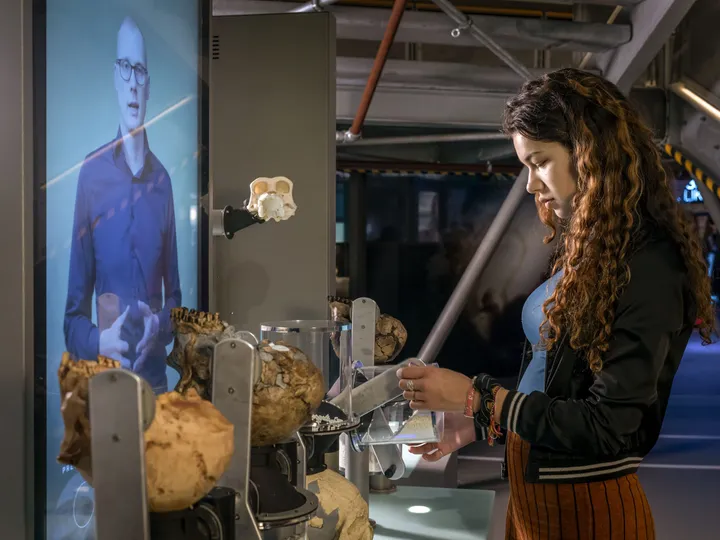
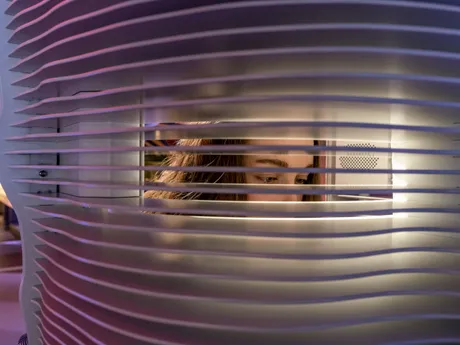
Three-part collage
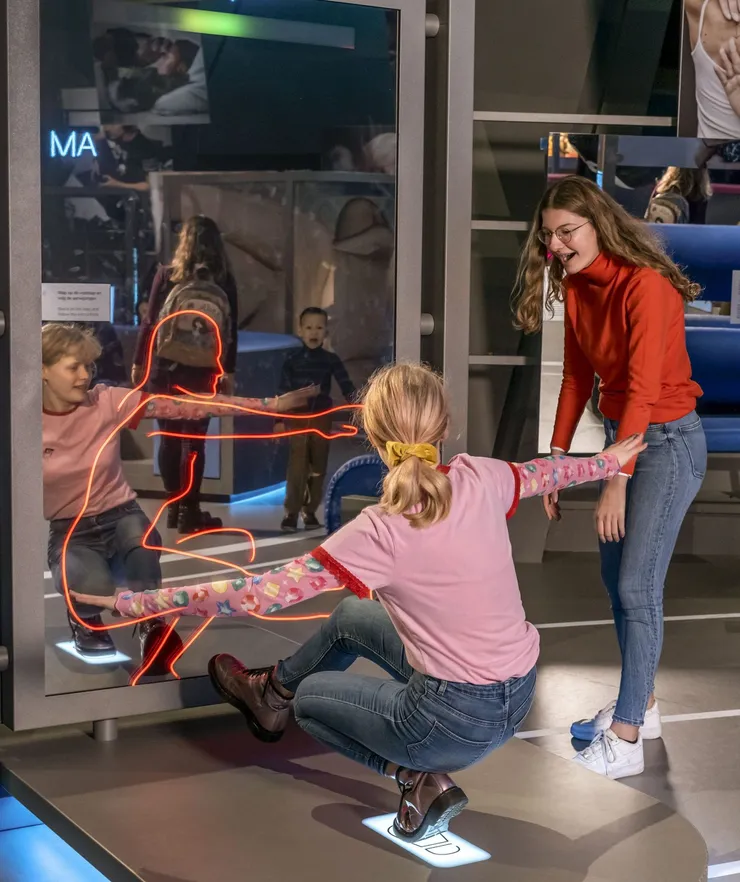
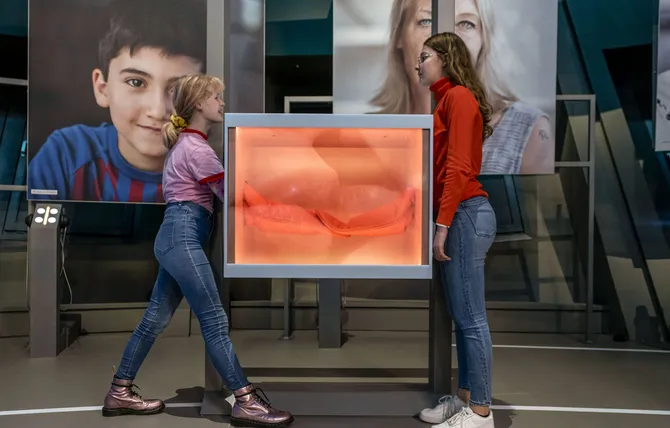
Overarching gestures
In Humania, everything is connected. Grouped in zones with corresponding colours, exhibits tell stand-alone stories that contribute to Humania’s bigger themes: ‘I was’ (green), ‘I am’ (blue) and ‘I will become’ (red). Neon-lettered questions, such as ‘what am I made of?’, hang above the displays, piquing your curiosity and drawing you into Humania’s magnetic field. Exhibits between two zones connect to both themes, creating a seamless transition as you explore the space and human lifecycle. For example, you learn how different cultures celebrate birthdays on the border of ‘I am’ and ‘I will become’. The graphic lines and central amphitheatre tie the three themes together in a cohesive and vibrant landscape.
Three-part collage
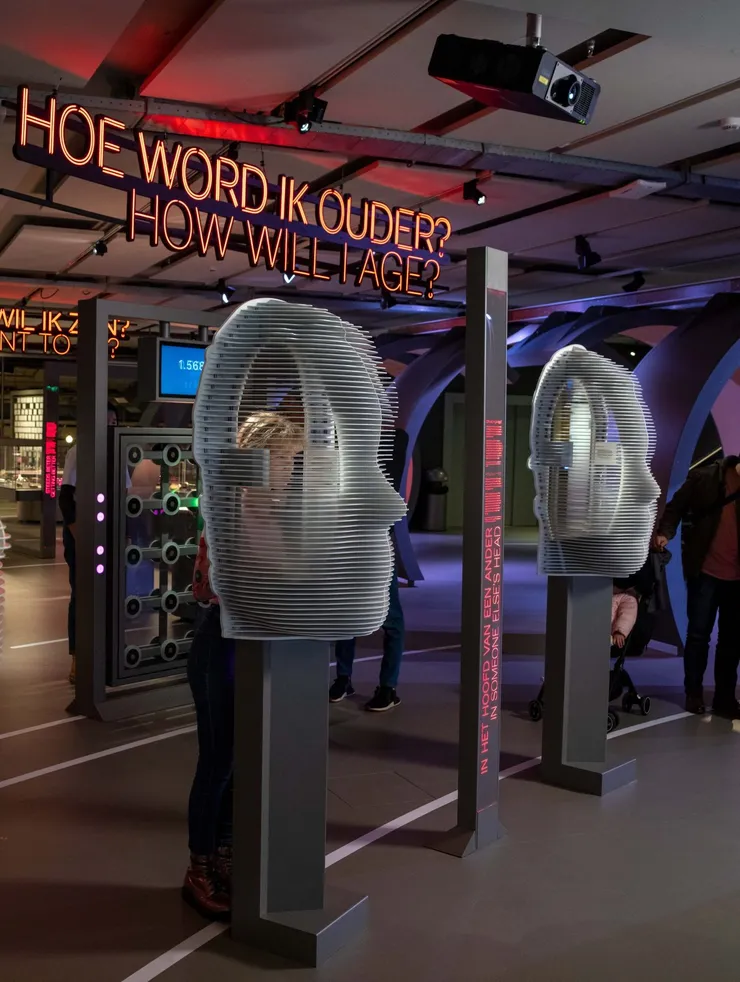
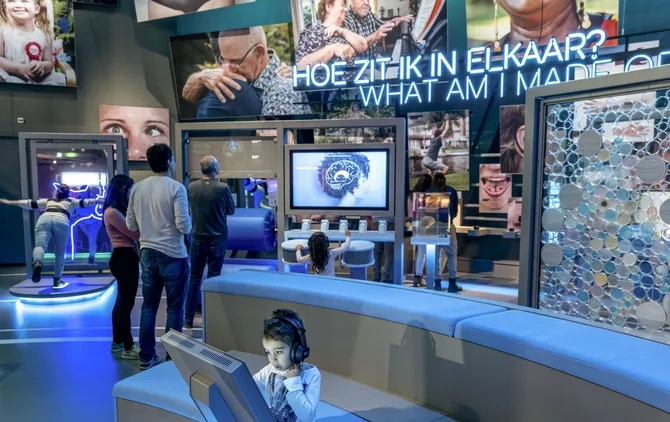
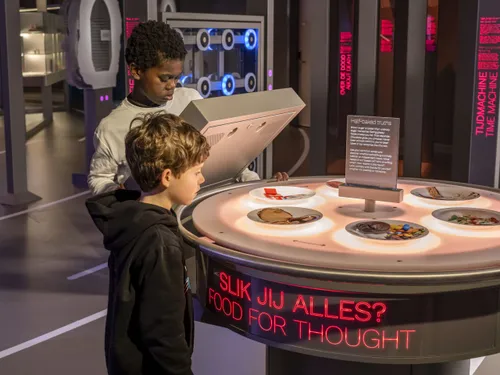
Displaying reality
Although the story of humanity is the story of a collective, it is made of countless individual experiences. Personal stories guide you through all aspects of human life – including sexuality and death. In one exhibit, you can literally enter the heads of people who experience diverse mental health problems to hear their thoughts. Along the exhibition’s outer walls, a photo gallery features a diverse array of people, embodying the many perspectives and experiences that shape our understanding of humanity.
